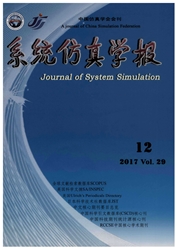

 中文摘要:
中文摘要:
单点交叉口信号优先可以降低公交车辆延误且易于实现。研究了公交相位绿灯延长、红灯早断和插入相位三种单点公交优先感应控制策略;应用延误三角形方法建立了以公交车辆车均延误变化量和非优先相位车均延误变化量为指标的三种单点公交优先策略效益计算模型。以两相位信号控制为对象,计算对比分析了三种公交优先策略的正负效益及其影响因素,并通过仿真进行了验证分析。研究表明:公交相位绿灯延长、公交相位红灯早断和插入公交相位三种策略都能够降低公交车均延误,与此同时也都会带来非优先相位车流延误的增加,但影响的程度不同。公交相位绿灯延长策略的效益略小于公交相位红灯早断策略,而相位插入策略的效益与插入时刻等多因素相关。
 英文摘要:
英文摘要:
Giving buses priority at isolated intersections is an efficient and realizable approach to decrease bus delay. Three bus priority strategies were proposed: green extension, red truncation and phase insertion. The delay triangle was used to build bus delay models and no-priority phases delay models under different priority strategies. Two indexes: bus delay and no-priority phases delay were adopted to evaluate the efficiency of each bus priority strategies. And a series simulation was done to validate the resolutions. The results of the models and simulations show that delay of buses can be decreased by the three priority strategies while increasing delay of no-priority phase movements. The efficiency of red truncation is much higher than that of green extension. And the efficiency of phase insertion is relevant with the proper inserting time, saturation of bus lane and other factors.
 同期刊论文项目
同期刊论文项目
 同项目期刊论文
同项目期刊论文
 期刊信息
期刊信息
